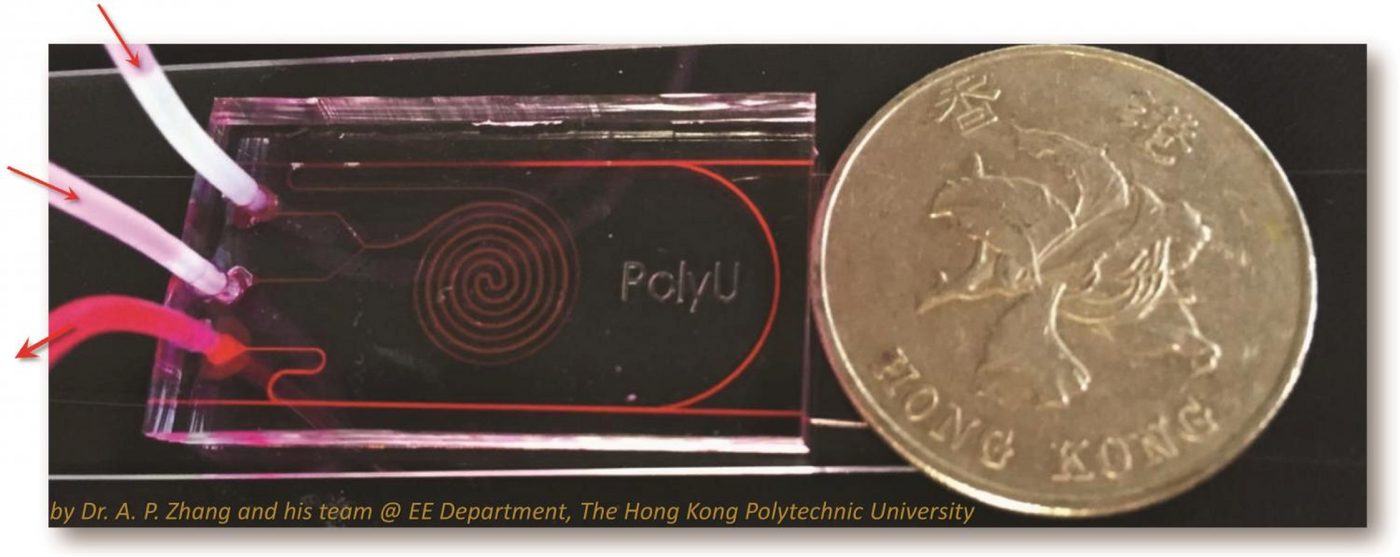Diabetes is a worldwide epidemic; nearly 422 million people worldwide are afflicted with this chronic condition. Timely and accurate blood glucose monitoring is essential in the diagnosis, treatment, and management of diabetes. To that end, researchers in China have developed an ultrasensitive “
lab-on-a-chip” device that can measure glucose concentrations with one drop of sweat.
Diabetes mellitus is characterized by the body’s inability to regulate blood glucose levels. The disease involves insulin, a hormone produced naturally in the body that stimulates the uptake of glucose in the body’s cells. In diabetes there is a deficiency of insulin, either because beta cells in the pancreas are unable to produce insulin (Type 1 diabetes), or because the normal insulin is produced in insufficiently quantities (Type 2 diabetes). Both forms of diabetes require constant and vigilant monitoring of blood glucose, as too much or too little can lead to severe health conditions.
The new glucose sensor is based on fiber optic technology and microfluidics, two innovations that make the device ultrasensitive, cheap, and portable.
“Today, photonic approaches are recognized as the most promising techniques for ultrasensitive sensing,” said A. Ping Zhang, associate professor at the the Hong Kong Polytechnic University. “In particular, the synergistic integration of photonic sensing and microfluidics led to the state-of-the-art technology known as ‘optofluidics’ for biological and chemical analysis.” Optofluidics technology combines the detection of chemicals with the use of light, and microfluidics, where small amounts of fluids pass through microchannels on a chip.
Use of fiber optics allows the device to operate without electromagnetic interference, a problem which plagued previous generations of electrochemical glucose sensors. And the fiber optics also increase the sensitivity of glucose detection. According to the team, the device can sense extremely low glucose concentrations, even as low as 1 nM. In addition to sensitivity, the device purportedly reduces the response time, from 6 minutes to 70 seconds, according to the team.
Among the innovations for the portable glucose sensors, perhaps the one patients can relate to the most is the promise for a pain-free sugar check. This is because the device can function in solution, which means glucose measures can be obtained from just a single drop of sweat. For some diabetics that perspire easily, the device could replace painful finger pricks; however, for those who perspire less, finger pricks may still be necessary.
The team’s ultimate aim is to develop a range of lab-on-a-chip devices that are multifunctional in many areas of diagnostics. But for now they hope the device can provide a means for earlier diagnosis and more effective monitoring of diabetes.
Additional source:
MNT,
Optical Society Press Release









